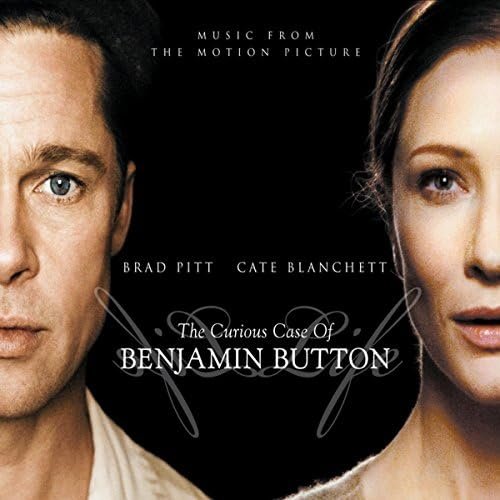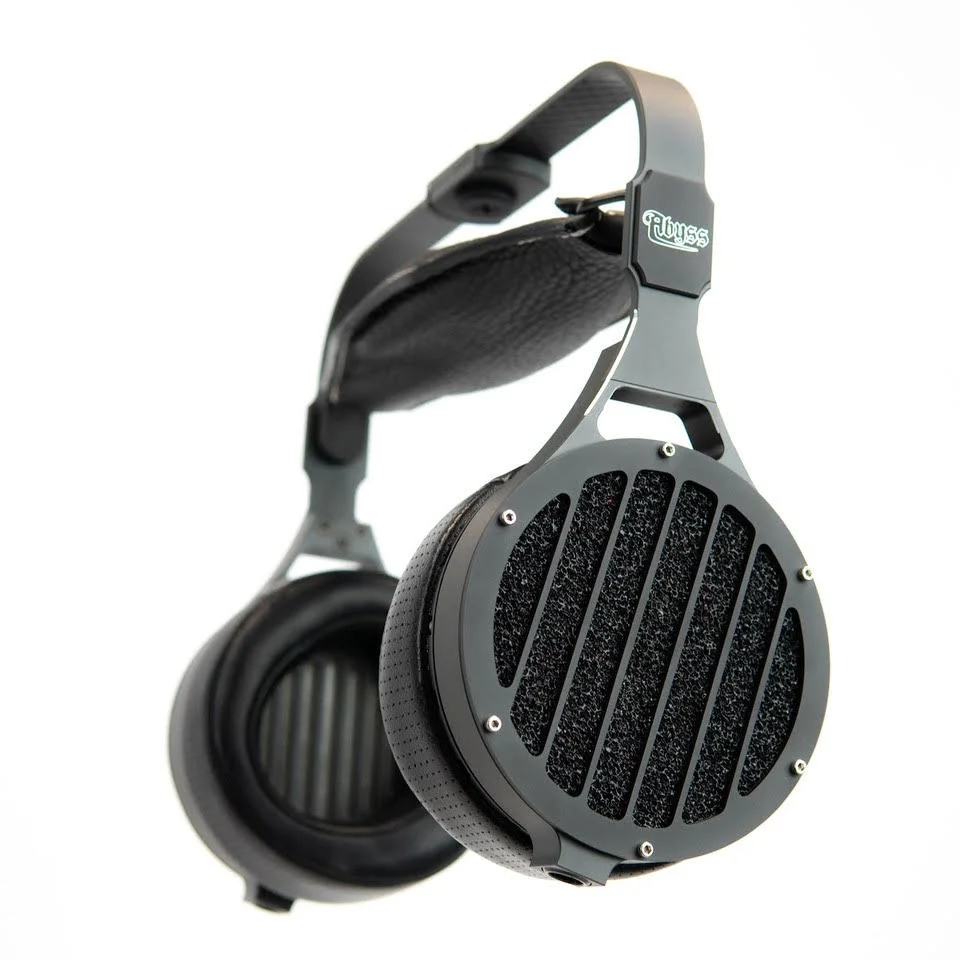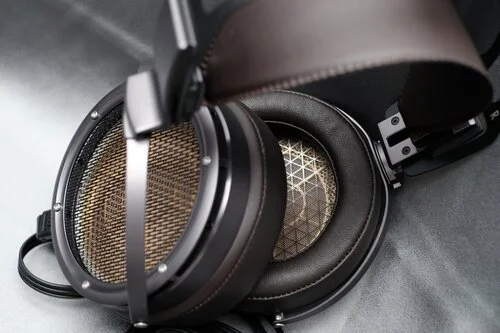HIFIMAN SUSVARA - REVIEW
HIFIMAN SUSVARA
Each of us have a particular ability or several perhaps, that we are predisposed to, are good at, or excel in. The difficulty I have found over the years, and I imagine most encounter, is discerning or coming to grips with what that or those abilities are. Some appear never to find them or to search them out, instead opting for what they are ‘supposed to do’ as dictated by another or by societal norms, which is a rather unfortunate turn of events in anyone’s life.
In my long years, I have discovered that writing is both a love and an apparent talent, which began at age five, when I wrote poetry for my seven aunts. Of course they adored them and this abetted a will to write while growing the ‘writing muscle.’ A love of design and a creative ability are also seeming talents. And it is the combination of ‘abilities’ that have found me starting this magazine and website and writing reviews, though more of my books and screenplays are finding their way to interested parties. Who of thunk?
Audio components are, in fact, likewise possessed of a talent(s) and abilities, that find them set apart from their respective kith and kin, while setting standards, in some cases, for all of ‘audiodom’. In this respect, I have come across DACs, streamers, speakers, amplifiers, etc. that have proven my prior statement to be true. And their are entire genres of audio equipment—electrostatics, single-ended triode and OTL amplifiers—that lift all boats, musically speaking. Then there are the planar magnetic headphones, whose top performers—Meze Empyrean Elite, ABYSS AB1266 Phi TC and now the HiFiMan Susvara—are incredibly talented. This brings us to the current review of the HiFiMan Susvara and its talents, abilities, all gathered at the cutting edge of headphone design.
Yes, the hits do keep on coming even in terms of a rather narrow niche—Top of the Line (TOTL) headphones—STAX SR-X9000, ABYSS AB1266 Phi TC, ZMF Atrium, Meze Empyrean & Elite and those soon to be determined.
REFRAIN: Unlike most reviews, this review will be non-sequential, as it will start with how the headphones actually sound and not the process of physically “undressing” them and/or laying out their various parts, specifications, etc. Think of this review then, as a non-linear movie— In the Shadow of the Moon, Kill Bill, Pulp Fiction, The Queen’s Gambit, etc—that, likewise, starts at the end and winds its way to the beginning.
THE SYSTEM
Grimm Audio MU1 Streamer
Silent Angel Rhein Z1 Streamer
Silent Angel Forester F2 Power Supply
Silent Angel Bonn NX Network Switch
Silent Angel Genesis GX Master Clock
Bricasti Design M1SE DAC
ALLNIC AUDIO D 10000 OTL/OCL DAC
Aurorasound HEADA Headphone Amplifier
ALLNIC AUDIO HPA 10000 OTL/OCL Headphone Amplifier
Pass Labs HPA-1 Headphone Amplifier
ABYSS AB1266 PHI TC Headphone
MEZE Empyrean Headphone
HIFIMAN SUSVARA Headphone
Kubala Sosna—cabling and wires
RSX Beyond Power Cables
Danacable Lazuli Nirvana Headphone Cables
Audience Hidden Treasure CAT7 Ethernet cables
TORUS RM20—Power Generation
THE SOUND
Natural. The HiFiMan Susvara is exceptionally natural in its ability to communicate music. And this translates to the naturalness of tone and timbre to air and atmosphere (of a given venue) and to staging, and the Susvara’s ability to, well, ensnare one for long hours of listening and very comfortably I might add.
Yes, natural is a term consistent in my notes as it surfaces continually over the course of my review of the HiFiMan Susvara. One does not have to ‘listen’ or seek it out, as it is always there, setting itself apart from the various headphones attempting naturalness and almost getting there, save coloration or soul-sucking neutrality (a coloration as well) or tonal/timbral inaccuracy, however slightly off. This ability with the sum of its others abilities, listed below, allow the Susvara to transcend simple music playback and provide instead a you-are-there presence and the resultant palpability or of a ‘genuine’ interaction.
The Susvara’s tone and timbre relative to voice and instrumental notes is superb and, in truth, calls attention to itself for its incredible, again, naturalness, relative to all other headphones. The Susvara, marginally, even pushes past the the ABYSS AB1266 Phi TC and the STAX SR-X9000, two stellar headphones and given the talents and abilities of the aforementioned headphones, this is truly saying something. And did I mentioned how beautifully refined the Susvara is?
But there is a good deal more to the Susvara that lifts it to a rather commanding position. It is incredibly quick/fast as in its microdynamics are on the level of an electrostatic headphone and its ‘speed’ folds everything in with the proper pacing timing, and rhythm, again a vaunted electrostatic ability. But where electrostatics can, in general, seem more ethereal, lighter, the Susvara brings a concurrent weight and solidity that, again, find it more natural, grounded.
And then there is its dimensionality. I’d spoken of this often with the electrostatics and then with two non-electrostatics—ABYSS AB1266 and the ZMF Atrium—that came to within a rather thin patina of an electrostatic’s abilities. The Susvara, however, pushes even more closely, in regard to dimensionality, than the prior headphones making live and choral music imminently more enjoyable. Transportive was a term I often used in describing electrostatic headphones or Tardis-Like, a Dr. Who reference, which meant that you were being transported to the venue where the music was first recorded. Few audio components of any kind can do this, so when one does, it is truly exceptional.
Finally, I would be remiss if I neglected the Susvara’s other outstanding technical abilities. It’s ability to both excavate and carefully extract detail on par with the best of the best headphones and, dare I say, the abilities of other TOTL components not headphones. And via this level of detail retrieval is where nuance and intention and emotion together unfold. The Susvara’s transparency brings into focus even that which lies at the edge of a given soundstage and in a number of cases reveals that which was not previously known to have been there, at the edge of the stage, consistently.
The HIFIMAN SUSVARA’s soundstage is electrostatic like, meaning it captures the given venue accurately with great realism, depth, and holographic imagining but, as mentioned above, it adds weight/gravitas to that mix, fleshing out a performance. Further, the Susvara can like the ABYSS AB1266 be quite intimate or remarkably cavernous, when called to be so. And its staging is superb, as width, depth, relative positioning/layering, air, and ambiance (of the venue) again, point it in the direction of an electrostatic headphone with planar/dynamic abilities.
BASS
Highly detailed. Electrostatic-like speed. Superb transparency and resolution. I had mentioned in the Abyss AB1266 review that:
“There was some trepidation, I must admit, to the Aurorasound HEADA driving the Abyss AB1266 with its 2 watts of power. The Abyss at 88db is not at all very efficient and its 50 Ohm impedance requires a good deal of power run across it.”
The Susvara’s, however, presented an even more rarefied case as their ‘efficiency’ dropped down to 83db with 60-Ohms of impedance. “Yikes(!),” was the first word that came to mind, but in addition to the Aurorasound HEADA, the current, in-house, reference HPA, there was the ALLNIC HPA 10,000 in for review and with its 10 watts of power, things would be handled and when it came to bass reproduction, one way or the other.
I needn’t have worried as the HEADA has proven time and again, that it is quite the marvelous headphone amplifier and able to leap… well drive even the most inefficient of headphones with moderately applied gain (11-12 o’clock @ High Gain).
The Susvara’s rendered Alexandre Desplat’s “Postcards” (The Curious Case of Benjamin Buttons Soundtrack, Concord Records) with a wide, natural, and differentiated soundstage. The deep ‘rumble’ at the edges of the soundstage on “Postcards” has both weight and gravitas. Of course the balance of the bass review tracks—Delfeayo Marsalis’ “Secret Love Affair” (The Last Southern Gentleman, Troubadour Jazz Records), David Holland’s “B-40/RS-4-W/M23-6K” (Emerald Tears, ECM), Haden and Taylor’s “Chairman Mao” (Nightfall, Naim Records)—were wielded against the Susvara and it handled every one with incredible naturalness, superb tonal/timbral differentiation, blazing dynamics, and exceptional staging. And while the Abyss AB1266 Phi TC does, indeed, go deeper across the bass region, the attendant strengths of the Susvara certainly level the playing field. I’ll take them both!
MIDRANGE
Natural.Tonally & Timbrally Superb. There is the aforementioned naturalness which conjures impeccable midrange beauty, timbre, and tone that bring a true sense of voice or an instrument with all the technical attributes easily at hand. This quite rare ability, even among the very top headphones, regardless of technology, allows one to listen across genres with an ease and naturalness that summon performers and performances for hours on end to you or you to them. Perhaps another way of describing this, in relation, to the human voice is a ‘humanness’ that is as far away from a digital rendering as ice is from fire.
Melody Gardot’s Worrisome Heart (Decca) heard via the Susvara is, perhaps, one of the most beautiful and detailed renderings that I’ve yet listened to. Patricia Barber sibilance free performance, known to be ‘hot’ with less than stellar components across the chain, is itself incredibly natural, refined, and presents technical bonafides on the same level as both the ABYSS AB1266 Phi TC and the STAX SR—X9000 electrostatic headphone. Sarah Vaughn, After Hours (Parlophone, UK) is the most breathtakingly natural and the clearest, the most realistic, the most intimate that I have ever heard it with the Susvara.
The Susvara brings the music home. What do I mean by this? What this transducer does for one’s music is to render it in a manner that is beguilingly natural, seductive, detail rich, and expressive. Yes, a mouthful of descriptors that help me to get close to describing what the Susvara does, though I may not have captured its, well, essence in its entirety.
TREBLE+
Sometimes massed violins do not actually sound like massed violins, when any part of the ‘High Fidelity’ playback chain shirks its responsibilities for accuracy or naturalness of tone and timbre. However, when there is synergistic alignment and all components meticulously do their jobs, tone and timbre are superb, engrossing, and, truly, rewarding. The HiFiMan Susvara is outstanding in this respect and will bring great clarity and many revelations to one’s music.
Across countless albums, streams this was true with the Susvara regardless of the genre, and the Susvara’s naturalness and the truthful beauty, relative to tone and timbre compelled one to listen, happily, for hours. It also highlighted the lack of relative ability, given the consistency of the playback chain, of other headphones. Suffice to say, that if tone and timbre are inaccurate or, God forbid, wrong, then one’s musical experience is, well, flawed, inexact, colored, etc. Across the treble region the Susvara’s naturalness, again set it apart from all headphones regardless of their technological clan—dynamic, planar, electrostatic, etc.
COMPARISONS
SUSVARA vs ABYSS AB1266 Phi TC
There are a number of things that the Susvara and the ABYSS AB1266 ($5,995), as planar headphones, have in common that seat them at the pinnacle headphone performance.
Their ability to unearth copious amounts of detail with a preternatural, matter-of-fact ease that may well border on audacity. Though if you are the owner of said headphone(s) or their reviewer it is an audacity that is most welcome and which quickly propels either headphone to the head of the class and to top honors. Dynamics, microdynamics, and pacing are likewise without peer for the two headphones, though one must certainly consider the STAX SR-X9000 in the mix here. And there is an incredible ‘openness’ as suffused with the air of a given venue and the Susvara’s and the ABYSS’ ability to provide said venue to its full depth and width. Further, both headphones posses the ability to layer the soundstage—place musicians at relative depth and width— that would seem at odds with a headphone and more at home with loudspeakers, but these two headphones (as do the best electrostatic headphones) recreate the stage with great mastery and truth and fidelity.
Where the Susvara and the ABYSS AB1266 very slightly appear to edge each other out are in the areas of overall bass weight/gravitas, tonal and timbral shading/accuracy, naturalness, and comfort. To be clear, they are both exceptional in the above areas, far above any dynamic or planar headphone and many electrostatics that I have reviewed, heard, or owned to date. One imagines, however, with TOTL—Top of the Line—headphones that there exist an inherent competition to push pass all others, all competitors.
In this respect the ABYSS AB1266 manages to push ahead of the Susvara in its ability to plumb the depths to the Holy-Bass-Head-Grail and given the accompanying amplifier to snatch it up with ease. The Susvara is by no means bass ‘shy’ or ‘weak and many, this reviewer included, would be as happy as a clam with the Susvara in this respect. However, for tone, timbre, and naturalness there is no other headphone, of which I am aware, that captures and renders tone and timbre so realistic, so naturally, and with such ease as does the Susvara. And in this ability even the electrostatics cannot match the Susvara. The ABYSS AB1266 is indeed exceptional but here the Susvara pushes ahead. And comfort, while the ABYSS is not uncomfortable, given its Frankenstein-like form and ‘air-clamping’ mechanism, the Susvara is extremely comfortable and provides for a fit that one can happily wear all-the-day long.
In truth, I find the headphones complimentary and different enough to give distinct perspectives on one’s music that is always at the tip-top of the game. That is to say, that having both would, no doubt, greatly benefit the headphone connoisseur.
SUSVARA vs STAX SR-X9000
While the Susvara and the STAX SR-X9000 ($6,200) represent an ‘Apples versus Oranges’ comparison given their technological differentiation—planar versus electrostatic—I have come to know them both quite well, so as to put forth a goodly and reasonable comparison.
Firstly, the Susvara and STAX headphones are alike, in that I find them beautifully designed and extremely comfortable for all day wearing/listing or reviewing. They are both exceptionally musical in a way that compels one to listen for hours on end. To say that I have been ‘enraptured’ by their abilities would not be an exaggeration. And the Susvara and the STAX SR-X9000 are detail hunters/excavators of the first degree. They both posses lightening-fast abilities with regard to dynamics, microdynamics/transient speed the combination of which appears to conjure ‘lifelike’ performances and in venue ‘seating’—you are there—like no other headphones.
Where the two headphones differ, interestingly enough, is in their respective bass weight and gravitas. The Susvara is more hard-hitting in the bass region, carries more overall weight, and reaches more deeply and more ‘dynamically’ toward the sub bass region, but not into the sub-bass region. The STAX SR-X9000 provides an exceptional measure of bass response, perhaps the best of any electrostatic headphone but compared to the TOTL Susvara it is a hair’s width short. At the other end of the spectrum the STAX SR-X9000 scales the treble heights with unmatched abilities replete with a transparency, resolution, and clarity that have to be experienced. In this respect, the SR-X9000 has no peer. In the midrange as well, the Susvara, given the weight of the upper bass which extends but does not diminish fidelity or clarity, is more significant, tactile, fleshed out, though the STAX SR-X9000 is very close behind.
If these two headphones were able to utilize the same amplification, which they cannot, then they too would be very complimentary, but having them both means a complete separate system—an electrostatic HPA—to keep them both. Though they are that good, cost for most would certainly be a factor.
DESIGN—LOOK, FEEL, AND TECHNOLOGY
Elegant. Beautiful. The HiFiMan Susvara headphones embrace a certain elegance. The large, window-shade outer covers are beautifully designed and allow one access to the striking gold-colored membranes within. There is a wood rim which circles each Susvara headphone, which I find a nice touch and color match to the silver and black. Simply, it is a well executed industrially designed planar magnetic headphone.
In terms of the technology the Susvara, reportedly, incorporates a driver/diaphragm that is a millionth of a meter with correspondingly low mass and this translates to, “tremendously low distortion levels,” whilst “providing a highly dynamic response.” And when coupled with HiFiMan’s ‘stealth magnets’ distortion levels are further reduced relative to both electrostatics and dynamic headphones. No doubt, this is, at the very least, a main reason for the Susvara’s naturalness.
SPECIFICATIONS
HIFIMAN SUSVARA
Driver type: Planar Magnetic
Design: Over-ear
Weight: 450g
Sensitivity: 83dB
Impedance: 60 Ohm
Frequency Response: 6Hz – 75kHz
DRIVABILITY
Even more than the Abyss AB1266 Phi TC, the HiFiMan SUSVARA (at 83dB sensitivity, 60-Ohms) requires a minimum 2 quality watts from a top-tier headphone amplifier—Aurorasound HEADA (2W), PASS LABS HPA-1 (3.5W), ALLNIC HPA 10000 OTL/OCL (10W)—to attain its exceptional performance. I would not recommend a Digital Audio Player (DAP), nor would I recommend a low watt desktop headphone amplifier. The lack of qualitative power and, for that matter, a quality front end—streamer, DAC, CDP, etc—and things can go south very quickly. All of the headphone amps listed above met all required needs and the in-house front ends were all more than capable for the task (see Systems).
CONCLUSION
Wow! And the hits keep on coming! Yeah, not that long ago I was singing the praises of the Abyss AB1266 Phi TC and before that the STAX SR-X9000 and they are still every bit as good as reviewed. The HiFiMan Susvara now easily joins that rather fantastic duo with a few talents up its ‘sleeves’ that allows it to move slightly past the other two headphones in certain areas—naturalness, musicality, blazing speed (even relative to electrostats!)—while being their equal in most others.
The Susvara is truly a phenomenal planar headphone with, perhaps, its main differentiators being its rather sublime naturalness and its exacting way with tone and timbre, which lift the playback of one’s music to new levels of performance and enjoyment and technical prowess. And one must certainly mention its electrostatic-like speed which, well, brings live performances and choral music to life, as only electrostatics have been able to do.
One, however, must be very clearly aware that the HiFiMan Susvara will not suffer the poorly powered, nor the qualitatively weak headphone amplifiers. That said, it has easily won our DIAMOND AWARD for its sublime abilities placing it on that aforementioned plateau of excellence with the ABYSS AB1266 Phi TC and the STAX SR-X9000.
Pros: Natural more so than any headphone that I have heard to date and matched with its superb technical abilities the HiFiMan Susvara is, perhaps, that desert island headphone or, in this day and age, that deeply buried, post-apocalyptic-bunker headphone that will see you through until septic failure or water/food shortage or catastrophic disagreement with your bunker mates.
Cons: If power was the “Achilles Heel” of the Abyss AB1266 Phi TC then it is doubly that for the HiFiMan Susvara. You’ll need high quality power from a high quality HPA of, at least, 2 watts.
THE COMPANY
HIFIMAN
SUSVARA HEADPHONES ($6000)
customerservice@hifiman.com
1-201-HIFIMAN (1-201-443-4626)
https://store.hifiman.com/









